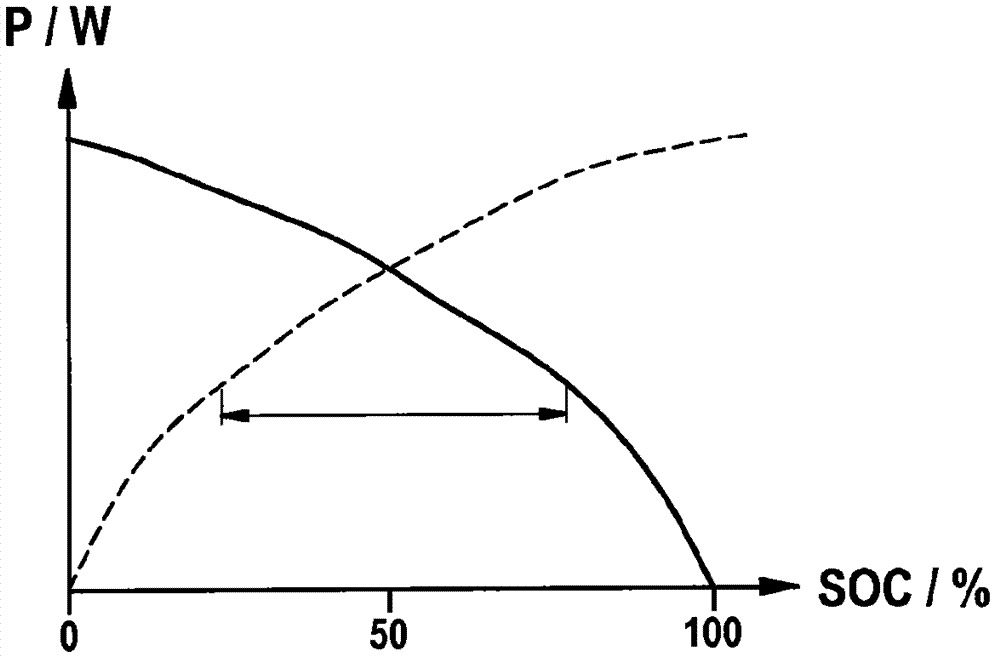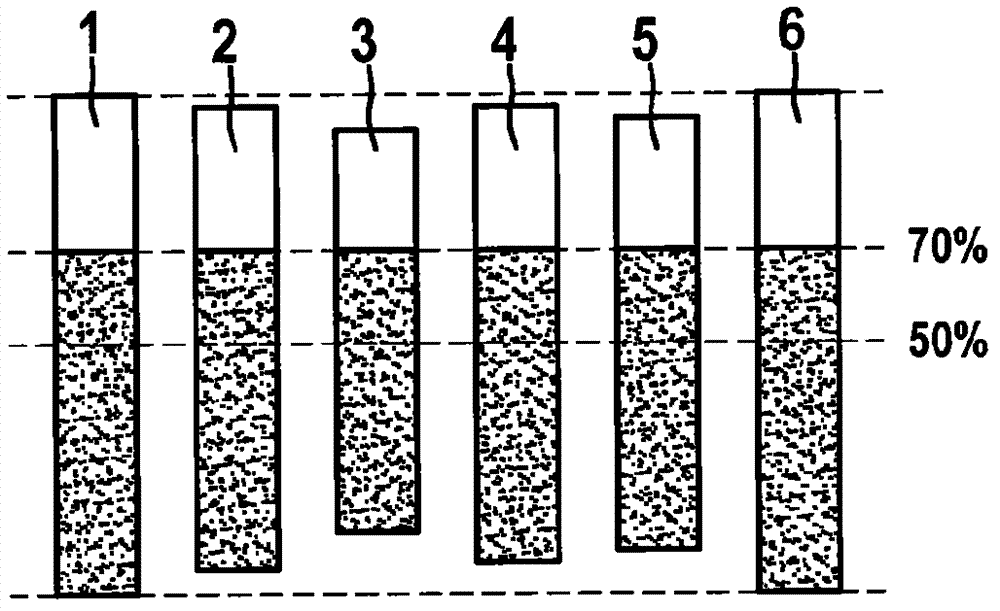Method for balancing states of charge of a battery having a plurality of battery cells as well as a corresponding battery management system and a battery
A charging state and management system technology, applied in the field of motor vehicles and lithium-ion batteries, can solve problems such as energy loss
- Summary
- Abstract
- Description
- Claims
- Application Information
AI Technical Summary
Problems solved by technology
Method used
Image
Examples
Embodiment Construction
[0025] The invention relates to a method for equalizing the states of charge of an accumulator or an accumulator battery, in particular a lithium-ion accumulator or individual cells of a lithium-ion accumulator.
[0026] figure 1 The state of charge and the discharge power of the electrochemical cell and the relationship between the state of charge and the charge power of the electrochemical cell are schematically described. exist figure 1, the state of charge SOC is depicted as a percentage on the x-axis. The Y-axis shows power in watts. The dashed line depicts the discharge power and the solid line depicts the charge power. The marked area describes the optimum working range. Depend on figure 1 It can be seen that as the state of charge increases, the maximum allowable charging power decreases, while the maximum allowable discharge power increases. For this reason, in practice, a drive window with a state of charge value around 50% is used.
[0027] Common equalizatio...
PUM
 Login to View More
Login to View More Abstract
Description
Claims
Application Information
 Login to View More
Login to View More - R&D
- Intellectual Property
- Life Sciences
- Materials
- Tech Scout
- Unparalleled Data Quality
- Higher Quality Content
- 60% Fewer Hallucinations
Browse by: Latest US Patents, China's latest patents, Technical Efficacy Thesaurus, Application Domain, Technology Topic, Popular Technical Reports.
© 2025 PatSnap. All rights reserved.Legal|Privacy policy|Modern Slavery Act Transparency Statement|Sitemap|About US| Contact US: help@patsnap.com



